Key Takeaways:
Unique traits like fingerprints and face scans are replacing passwords. They are crucial for fraud prevention and ensuring robust, non-replicable transaction security in eWallets.
Your biometric data is stored only on your device's Secure Enclave, ensuring privacy. eWallets only receive a safe, encrypted token to verify your identity.
Users benefit from frictionless convenience, completing payments in seconds with a glance or touch. This speeds up transactions and significantly boosts app adoption.
Combining biometrics with behavioral analytics and strong encryption like AES-256 offers the most robust defense against fraud and spoofing attacks.
Successful implementation demands using native APIs, ensuring device compatibility, and providing smooth password/PIN fallbacks for seamless, reliable user access.
In today’s digital age, eWallets are an essential part of our lives, making transactions faster, easier, and more convenient.
But as the use of these digital wallets grows, so does the need for stronger security. This is where biometric authentication in e-wallets comes into play.
Biometrics such as fingerprint scanning, facial recognition, or even voice recognition are transforming the way we secure digital payments. Unlike traditional passwords, which can be hacked or forgotten, biometric data is unique to each person, offering an extra layer of protection.
In this blog, we’ll dive into why biometric authentication is revolutionizing the world of eWallet security, making transactions safer and more efficient.
If you’re looking to enhance your eWallet with these cutting-edge features, we’ll show you how biometric authentication can help. Ready to secure your digital transactions like never before? Let’s explore!
Biometric Authentication Explained
Biometric authentication is revolutionizing digital security, especially in e-wallet apps.
It uses unique physical characteristics like fingerprints, facial recognition, or iris scans to verify users’ identities.
This technology adds an extra layer of protection, making it harder for unauthorized users to access sensitive information or complete transactions.
For businesses looking to develop an e-wallet app, integrating biometric authentication can not only boost security but also improve user experience. It eliminates the need for passwords, speeding up the login process and making transactions smoother.
By using biometric data, you ensure that only the rightful user can access their account or authorize payments, reducing the risk of fraud.
If you’re looking to take your app’s security to the next level, biometric authentication is a must-have feature in today’s digital world.
Types of Biometric Authentication in the eWallet App
In the current time, biometric authentication in digital wallets is becoming the standard for secure and seamless payments.
Businesses like yours are adopting different types of biometric authentication in e-wallets to ensure that transactions are not only easy but also incredibly safe.
If you're exploring an ewallet app idea, integrating biometric authentication can significantly boost trust and usability right from the start.
Each biometric method has its unique advantages and plays a crucial role in enhancing user confidence while preventing fraud.
Let's dive into the best biometric authentication methods for eWallet apps:
1. Facial Recognition
Imagine unlocking your eWallet app just by looking at your phone. Facial recognition in digital wallets is becoming a game-changer, providing a secure yet incredibly user-friendly experience.
This technology maps your facial features and compares them to stored data, ensuring that only you can access your eWallet. Whether it’s for payment authorizations or accessing sensitive information, facial recognition offers a quick, hands-free option.
What’s even better? It’s gaining rapid adoption, thanks to its reliability and ease of use. eWallet app trends indicate that an increasing number of users are opting for facial recognition because it’s significantly faster. No more remembering PINs or passwords-just a glance and you’re in.
2. Fingerprint Scanning
Fingerprint scanning in eWallet apps has been around for a while, but its popularity continues to rise. It’s secure, fast, and familiar. Fingerprint scanning in e-wallet apps works by analyzing unique patterns in your fingerprints, making it nearly impossible for anyone else to replicate.
This method is one of the most trusted forms of biometric security. It’s also incredibly efficient, reducing the time it takes to confirm your identity.
As a mobile app development company, we know how to integrate this technology smoothly, giving your users a frictionless experience while keeping their data safe.
Plus, fingerprint scanners are built into most modern smartphones, meaning there's no extra hardware required. It's an easy, reliable method that your users will love.
3. Voice Recognition
Voice recognition in digital wallets is another exciting option that’s taking security to the next level. With this technology, you authenticate your eWallet using your unique voice patterns. Whether it's to authorize a payment or to check your balance, your voice serves as your password.
What’s cool about voice biometrics is its ability to identify voice tone, pitch, and cadence, making it incredibly secure. It’s also one of the easiest ways to authenticate while on the go, especially if your hands are full or if you’re driving.
This method is still emerging but is being used more often for seamless user experiences. As voice recognition becomes more sophisticated, expect it to play an even bigger role in biometric authentication in a digital wallet.
4. Other Biometric Methods
While facial recognition, fingerprint scanning, and voice recognition are the frontrunners, there are other biometric authentication methods gaining traction.
Iris scanning analyzes the unique patterns in your eyes, while behavioral biometrics looks at how you interact with your device (like your typing speed or how you swipe).
These alternatives are still in the experimental phase but are becoming more reliable and accessible. As the demand for heightened security increases, it’s likely that we’ll see even more diverse biometric options integrated into e-wallet platforms.
So, these are some types, and moving on from here, let’s get to know:
How Biometric Authentication Enhances eWallet Security?
In the current world, securing your financial transactions is more important than ever.
Biometric authentication enhances eWallet security by ensuring that only the right person can access and use the digital wallet.
Unlike traditional security measures like PIN codes or passwords, biometrics add a unique layer of protection that’s harder to bypass.
Let’s dive into how biometric authentication secures eWallet apps and why it’s becoming a must-have feature for your business.
1] Personalized, Uniquely Secure Access
When you use biometric authentication in mobile wallet apps, you're adding an extra layer of security that’s unique to each individual.
Your face, fingerprint, or voice is something only you have, making it much harder for anyone else to get into your eWallet.
Unlike passwords or PINs, which can be guessed or stolen, biometric security for financial apps ensures that your users have a secure, personalized experience that’s tough to replicate.
2] Eliminating Weak Points in Traditional Authentication
Traditional security methodslike PINs and passwords, are often vulnerable.
They can be hacked, stolen, or easily guessed.
But biometric authentication secures eWallet apps by replacing these weak points with something far more secure: your biometric data.
Whether it’s a fingerprint, a facial scan, or voice recognition, this data is incredibly difficult to replicate, offering your users a much safer, more reliable way to access their wallets.
3] Faster, Seamless Authentication Process
Let’s face it, speed matters.
With the use of biometric authentication in mobile wallet apps, your users don’t have to fumble around with remembering passwords or PIN codes.
They can simply scan their fingerprint or glance at their phone to quickly authenticate their identity. It’s fast, smooth, and efficient, without sacrificing security.
Biometric security for financial apps speeds up the process while keeping your users' data safe, making their experience frictionless and hassle-free.
4] Real-Time Fraud Prevention
Fraud prevention is key in financial apps, and biometric authentication in eWallets helps make that happen in real-time.
If someone tries to access your wallet, the system instantly verifies their identity using biometrics, whether it’s a fingerprint, facial scan, or voice recognition.
This means you can stop fraud before it even happens. With biometric security for financial apps, you’re providing proactive protection for your users, ensuring that they have full trust in your eWallet platform.
So, these are some of the ways through which biometric authentication improves digital security.
The Technology Behind Biometric Authentication in eWallets
The technology behind biometric authentication in eWallets is continuously advancing, providing robust solutions that ensure secure, convenient, and seamless access to digital wallets.
From fingerprint scanning to 3D facial recognition, these technologies are reshaping how we protect sensitive financial information.
Let’s take a closer look at the top biometric technologies making waves in the world of eWallet security.
A] Capacitive Fingerprint Sensors
Capacitive fingerprint sensors use electrical currents to map the ridges and valleys of your fingerprint, offering a high level of accuracy.
This technology is widely used in smartphones and eWallet apps due to its reliability and speed.
Since it’s based on the unique patterns of your fingerprint, it’s very hard to replicate, ensuring secure access to your digital wallet.
B] Structured Light Technology (3D Facial Recognition)
3D facial recognition uses structured light to capture not just the surface of your face, but its depth and texture.
This adds an extra layer of security, making it more difficult to trick the system with photos or masks.
With this cutting-edge technology, your app can provide a more secure, convenient way for users to authenticate their identity.
C] Convolutional Neural Networks (CNN)
CNNs are a deep learning method that enables biometric systems to recognize patterns with high accuracy.
By training these systems on vast datasets, CNNs can continuously improve and offer increasingly accurate recognition.
This technology is especially useful, ensuring that users are consistently verified with minimal errors or false positives, improving overall security.
D] Secure Enclave / Trusted Execution Environment (TEE)
A Secure Enclave or Trusted Execution Environment (TEE) isolates sensitive biometric data from other apps and the device's main operating system.
This technology ensures that the user's biometric information remains protected, even if the device itself is compromised.
It plays a crucial role in keeping biometric data safe during verification, providing an added layer of protection for eWallet apps.
E] FIDO2/WebAuthn Protocol
FIDO2 and WebAuthn are modern authentication protocols that use public-key cryptography instead of passwords.
When paired with biometric authentication, these protocols ensure that only the rightful user can access the eWallet app.
With eWallet app compliance in mind, these technologies meet security standards for sensitive financial applications, offering a secure and password-free user experience.
F] Liveness Detection Technology
Liveness detection ensures that the biometric data being used comes from a live person and not a photo or video.
This is essential for protecting eWallet security against spoofing attempts.
Liveness detection technology checks for subtle signs like blinking or changes in light, ensuring that your eWallet only authenticates a real user, adding an extra layer of fraud prevention.
G] Advanced Encryption Standard (AES-256)
AES-256 encryption is a military-grade standard that secures sensitive data during transmission and storage.
This encryption ensures that biometric data, like fingerprints or facial scans, is protected from unauthorized access.
When used in conjunction with biometric authentication, AES-256 adds an essential layer of security to eWallet apps, preventing the exposure of sensitive personal information.
H] Multi-Modal Biometric Fusion
Multi-modal biometric fusion combines different types of biometric data, such as fingerprints, facial recognition, and voice, to verify a user's identity.
By integrating multiple biometric methods, you increase accuracy and reduce the risk of fraud.
This technology is especially useful for businesses looking to ensure the highest level of security for their eWallet, offering a more robust authentication solution.
I] Behavioral Biometrics
Behavioral biometrics looks at how users interact with their devices, such as typing speed or how they swipe.
This continuous form of authentication doesn't require additional action from the user.
It runs in the background, ensuring that the person accessing the eWallet app is indeed the legitimate user.
This form of authentication adds an extra layer of security without interrupting the user experience.
J] Edge Computing Architecture
Edge computing allows data processing to happen directly on the user's device, rather than relying entirely on the cloud.
This reduces latency and speeds up the biometric verification process.
For eWallet security, it means faster, real-time authentication without compromising the privacy of the user's data.
His technology is especially useful for enhancing the performance of biometric authentication systems in eWallet apps.
Now that we've explored the powerful technologies behind biometric authentication, let's dive into the benefits of biometric authentication in eWallets and see how these cutting-edge solutions are revolutionizing the way we secure and access digital wallets.
Benefits of Integrating Biometric Authentication in eWallets
Integrating biometric authentication in eWallet apps isn’t just about keeping your platform secure- it’s about enhancing the overall experience for both users and businesses.
From improving security to creating a more seamless, user-friendly experience, there are numerous benefits of biometric authentication that can help elevate your eWallet.
Let’s explore how this powerful technology is reshaping the future of digital payments.
1. Enhanced Security and Fraud Prevention
One of the most significant benefits of biometric authentication in eWallet apps is the drastic improvement in security.
Traditional methods like passwords or PIN codes can be easily hacked or guessed, but biometrics-whether it’s fingerprints, facial recognition, or voice, are unique to each individual.
This makes it almost impossible for fraudsters to gain unauthorized access. Biometric authentication significantly reduces the risk of fraud by ensuring that only the authorized user can access the wallet, making it a highly effective solution for fraud prevention.
With this added layer of security, you’re offering a much more robust defense against unauthorized transactions. As a result, users feel much safer, knowing that their financial data is protected by something far more personal than a simple password.
2. Convenience and User Experience
One of the standout advantages of biometric authentication is the frictionless experience it offers.
Instead of having to remember complex passwords or PINs, users can simply scan their fingerprint or use facial recognition to unlock their eWallet.
The usefulness of biometric authentication in eWallet apps lies in its speed and convenience; it’s a far smoother experience than dealing with passwords or two-factor authentication methods.
This simplicity not only improves the user experience but also encourages greater usage of eWallets. Users are more likely to embrace digital wallets if they feel that the process is quick, easy, and secure.
By eliminating the hassle of manual logins, biometric solutions help make the experience more seamless and enjoyable.
3. Increased Adoption and Customer Trust
Trust is crucial when it comes to financial transactions.
Benefits of biometric authentication in eWallet apps extend beyond just security; they also play a major role in building user trust.
When users know that their biometric data is used to secure their transactions, they feel more confident using eWallets for daily payments.
This increased adoption is key for businesses looking to encourage more customers to use their eWallet services.
By integrating biometric authentication, you’re not just adding a layer of security but also fostering an environment of trust and reliability, which is critical for customer retention and growth.
4. Compliance with Global Security Standards
Another compelling reason to integrate biometric authentication in eWallet apps is its ability to help businesses comply with stringent security regulations.
Global standards like GDPR, PCI-DSS, and other financial security regulations require businesses to take extra steps to ensure the protection of sensitive data.
Biometrics not only make eWallets more secure but also help businesses meet these compliance requirements.
With biometric authentication, you’re ensuring that your app adheres to industry best practices, reducing the risk of penalties and improving your reputation in the eyes of both regulators and customers.
This gives you peace of mind while providing your users with a highly secure and compliant payment solution.
5. Cost Efficiency for Businesses
Investing in biometric authentication may seem like an upfront cost, but it can actually save you money in the long run.
By reducing fraud, minimizing chargebacks, and lowering the risks of security breaches, businesses can avoid the costs associated with financial fraud.
These savings often outweigh the overall ewallet app development cost in biometric systems.
Additionally, the efficiency brought by biometric authentication can reduce customer service costs related to password resets or identity verification.
Over time, the advantages of biometric authentication make it a cost-effective choice for businesses looking to improve both their security and bottom line.
Now that we’ve explored the major benefits of biometric authentication in eWallet apps, it’s clear that integrating this technology is a smart decision for businesses looking to stay ahead of the curve.
With these being clear, let’s get to know the top role of biometric authentication in e-wallet security.
The Role of Biometric Authentication in eWallet Apps
Have you ever worried about the security of your money sitting in your eWallet app?
In today's fast-paced digital world, securing your transactions is absolutely non-negotiable.
That's why understanding the role of biometric authentication in ewallet apps is so crucial for you and your peace of mind.
It's truly a game-changer! Let's dive into how this technology not only keeps your money safe but also makes your life easier.
-
Enhanced Transaction Security: Biometrics ensures that only you can authorize payments, making it nearly impossible for fraudsters to complete a transaction even if they steal your device. This is a primary Role of Biometric Authentication in e-wallet apps.
-
Faster Checkout Experience: Forget typing in long passwords or PINs. A quick face scan or finger touch dramatically speeds up the process, showing how Biometric Authentication Enhances eWallet Security without slowing you down.
-
Reducing Fraud Losses: By uniquely verifying the user's identity before every payment, biometrics drastically reduces financial loss for both users and eWallet providers.
-
Strengthening Account Access: Biometric verification is a superior second layer of security when you log into your app, preventing unauthorized account takeover attempts.
-
Meeting Regulatory Compliance: Many global financial regulations now mandate strong customer authentication. Integrating Biometric Authentication in Digital Wallets helps companies meet these strict, often mandatory, security requirements.
-
Boosting User Confidence: When users know their financial data is protected by their own unique biology, their trust in the eWallet increases significantly.
-
Providing Non-Repudiation: A biometric scan provides irrefutable proof that the authenticated user performed a specific action, preventing them from later denying the transaction.
-
Simplifying Multi-Factor Authentication (MFA): Biometrics can replace cumbersome SMS codes or security questions, making MFA seamless, efficient, and user-friendly.
-
Securing P2P Transfers: When you send money to friends or family, a biometric check ensures that funds are securely dispatched only under your direct authorization. This proves why Biometric Authentication is crucial for e-wallet apps.
-
Customizing Security Levels: Some eWallets allow you to set specific biometric requirements for high-value transactions, giving you granular control over your account security.
The role being clear, let’s get to know how to implement Biometric Authentication in e-wallet apps.
How To Implement Biometric Authentication in E-wallet Apps?
Biometric authentication in digital wallet apps has become the gold standard for securing financial transactions. It's not just about keeping up with trends; it's about giving your users the security they deserve while making their experience seamless.
Think about it.
Your users want to access their money quickly. But they also want to know their funds are protected from unauthorized access.
That's where biometrics comes in.
Fingerprint scans, facial recognition, and even iris scanning are transforming how people interact with their digital wallets.
If you're planning to start an online ewallet business, implementing biometric authentication isn't optional anymore; it's essential.
Let me walk you through exactly how to make it happen
Step 1: Choose the Right Biometric Technology
You've got options here.
-
Fingerprint recognition is the most common. It's fast, accurate, and works on almost every modern smartphone.
-
Facial recognition is gaining ground fast. Apple's Face ID proved that users love the convenience of just looking at their phone.
-
Voice recognition and iris scanning are less common but offer high security for premium applications.
Here's what you need to consider:
Your target audience's devices. If most of your users have older Android phones, fingerprint might be more reliable than facial recognition.
The level of security you need. For high-value transactions, you might want multi-factor biometric authentication.
Cost and development time. Fingerprint authentication is generally easier to implement than facial recognition.
Start with one method. You can always add more later as your online ewallet business grows.
Step 2: Integrate with Native Device APIs
This is where the technical work begins.
The good news? You don't have to build biometric recognition from scratch.
Both iOS and Android provide native APIs that do the heavy lifting for you.
For iOS: Use Touch ID and Face ID through the Local Authentication framework. Apple's already done the complex biometric processing; you just need to call their APIs.
For Android: Use the BiometricPrompt API. It works across different manufacturers and biometric types, which makes your life much easier.
These native solutions are tested, secure, and trusted by millions of users already.
They also handle the biometric data storage locally on the device. That's crucial- you never want biometric data traveling to your servers or stored in your database.
Privacy regulations like GDPR are strict about this, and users are increasingly aware of how their data is used.
Step 3: Design the User Enrollment Flow
When someone first sets up biometric authentication, the experience needs to be smooth.
Walk them through it clearly.
First, check if their device supports biometrics. Not all phones do, so you need a fallback option like a PIN or password.
If biometrics are available, explain why they should enable it. Use simple language: "Unlock your wallet with just your fingerprint-faster and more secure."
Then guide them through the enrollment:
Prompt them to register their fingerprint or face through your app.
Actually, better yet- direct them to their device settings if they haven't set up biometrics at the system level yet.
Once enrolled, let them test it immediately so they know it works.
Give them control. Always let users disable biometric authentication if they want to. Some people prefer PINs, and that's okay.
The use of biometric authentication in ewallet apps should feel optional and user-friendly, never forced. When designing your mobile app, always prioritize a seamless and flexible user experience.
Step 4: Implement Multi-Layer Security
Here's something important:
Biometrics shouldn't be your only security layer when you implement biometric authentication in e-wallet apps.
Think of it as one powerful piece of a larger puzzle.
Add these layers:
-
Device binding: Tie the user's account to their specific device. If someone tries to log in from a new device, trigger additional verification.
-
Transaction limits: For high-value transfers, require additional authentication—maybe a PIN on top of biometrics.
-
Behavioral analytics: Monitor unusual patterns. If someone who normally transacts $50 suddenly tries to send $5,000, that's a red flag.
-
Time-based restrictions: Lock accounts after multiple failed biometric attempts.
-
Encryption: All data transmission should use end-to-end encryption, regardless of authentication method.
This layered approach is what sets the best ewallet apps apart from the mediocre ones.
Step 5: Handle Failed Authentication Gracefully
Biometrics aren't perfect.
Sometimes the sensor doesn't read properly. Maybe the user's finger is wet, or they're wearing a mask that confuses facial recognition.
You need backup plans.
After a failed biometric attempt, offer alternatives:
Let them try again—but limit attempts to 3-5 to prevent brute force attacks.
Provide a fallback to PIN or password entry.
Send a verification code to their registered email or phone.
Never lock users out completely without giving them a way to recover access through legitimate means.
And definitely log these failures for security monitoring. Multiple failed attempts could indicate someone's trying to break in.
Step 6: Test Across Different Devices and Scenarios
This step separates good implementations from great ones.
Android alone has hundreds of device manufacturers, each with slightly different biometric sensors.
You need to test extensively:
Different phone models-Samsung, Google Pixel, OnePlus, budget phones, and flagships.
Various lighting conditions for facial recognition.
Different finger positions and moisture levels for fingerprint scanning.
Edge cases like what happens when a user changes their fingerprint or face registration in device settings.
Accessibility considerations for users with disabilities.
Get beta testers with diverse devices. The feedback you get here is gold.
When you implement biometric authentication in e-wallet apps, thorough testing prevents those embarrassing moments when the feature fails at checkout.
Step 7: Stay Compliant with Regulations
Legal stuff matters, especially with financial apps.
Different regions have different rules about biometric data handling.
-
In the EU, GDPR requires explicit consent and clear data handling policies.
-
In the US, States like Illinois have specific biometric privacy laws (BIPA).
-
In India, the IT Act and data protection frameworks govern biometric data.
Make sure you:
-
Get explicit user consent before collecting biometric data.
-
Clearly explain what biometric data you process and why.
-
Never store raw biometric data, only encrypted templates that can't be reverse-engineered.
-
Provide easy ways for users to revoke biometric access.
Your privacy policy needs to address biometric authentication specifically. Don't hide it in the fine print.
When you start an online ewallet business, legal compliance protects both you and your users.
Step 8: Monitor and Optimize Performance
Launch isn't the finish line—it's just the beginning.
Track these metrics:
-
Authentication success rate: What percentage of biometric attempts succeed on the first try?
-
Average authentication time: How long does the process take?
-
User adoption rate: What percentage of users enable biometric authentication?
-
False rejection rate: How often does the system reject legitimate users?
-
False acceptance rate: This should be near zero—any instance is a major security concern.
Use this data to improve continuously.
Maybe you notice fingerprint authentication fails more in winter (dry skin). You could adjust sensitivity or provide tips to users.
Perhaps facial recognition struggles in low light. Time to improve your prompts or add more detailed user guidance.
The ewallet app constantly refines its biometric systems based on real-world usage data.
Step 9: Educate Your Users
Technology is only as good as people's ability to use it. Create simple guides showing users how to:
-
Enable biometric authentication in your app.
-
Register their fingerprints or face properly on their device.
-
Troubleshoot common issues like failed scans.
-
Understand the security benefits.
-
Use tooltips, short videos, and in-app messages to guide them.
When users understand why and how to implement biometric authentication in e-wallet apps, adoption rates soar.
Step 10: Plan for the Future
Biometric technology evolves rapidly.
What's cutting-edge today might be standard tomorrow.
Stay ahead by:
-
Following industry developments in biometric security.
-
Planning for new authentication methods like vein pattern recognition or heartbeat analysis.
-
Keeping your codebase flexible so you can add new biometric types easily.
-
Monitoring what the ewallet apps are doing and learning from their innovations.
Building relationships with device manufacturers to get early access to new biometric APIs.
Your e-wallet should grow with technology, not get left behind.
This is how you can seamlessly integrate biometric authentication into eWallet apps. Now, let’s take a look at the challenges involved in implementing this technology.
Challenges and Considerations in Implementing Biometric Authentication
When it comes to challenges, integrating biometric authentication can be a game-changer for security. However, like any tech implementation, it comes with its own set of challenges.
Let’s explore these challenges and how to solve them:
Challenge 1: User Privacy Concerns
One of the first challenges you'll face is ensuring user privacy. Biometric data, like fingerprints or facial recognition, is sensitive and could make users wary about sharing it.
Solution: Ensure your app complies with privacy regulations like GDPR. Be transparent about data storage, use encryption, and offer users the option to opt out or use alternative login methods.
Challenge 2: Device Compatibility
Not all devices support biometric authentication, which can limit access for some users, especially on older phones or devices with outdated hardware.
Solution: Offer fallback authentication methods, like PINs or passwords. Make sure your app is optimized to detect the device's capabilities and provide users with alternatives if biometric features aren’t available.
Challenge 3: Security Vulnerabilities
Although biometric authentication is generally more secure than passwords, it still faces risks. Biometric data can be spoofed or hacked, which poses a serious threat to the app's security.
Solution: Use multi-factor authentication (MFA) alongside biometric verification to strengthen security. Regularly update your app’s security measures and stay informed on new hacking techniques to ensure a high level of protection.
Challenge 4: User Experience Issues
Biometric authentication can sometimes be frustrating for users if it’s not intuitive or seamless. A slow fingerprint scan or an inaccurate facial recognition system could drive users away.
Solution: Prioritize a smooth, fast user experience by testing biometric features thoroughly before release. Ensure the authentication process is quick and responsive, with no unnecessary steps that could cause frustration.
Challenge 5: High Development Costs
Incorporating biometric authentication into an eWallet app can be costly. It requires not only initial development but also ongoing maintenance and updates to ensure it works effectively.
Solution: Plan your budget carefully. Look for efficient solutions that minimize costs while ensuring top-tier security. Outsourcing to experienced app development firms like JPLoft can help reduce costs without compromising quality.
By understanding and addressing these challenges in eWallet app development, you can ensure that biometric authentication enhances both security and user experience without causing friction.
Case Studies: Successful Biometric eWallet Implementations
When we talk about biometric authentication implementation in eWallet apps, the success stories are already making waves.
But what are some top eWallet apps that offer biometric authentication? Let’s take a look at a few standout examples where biometric security is changing the game.
1. Apple Pay: Seamless Biometric Security
Apple Pay stands as a leading example of biometric eWallet implementations. It leverages Touch ID and Face ID to ensure secure and swift transactions. Users simply scan their fingerprint or face, and voilà! The payment is authenticated.
The beauty of this implementation lies in its simplicity and reliability. By using biometric data, Apple Pay removes the need for PINs or passwords, making the process quicker and much more secure.
If you're looking to develop an app like Apple Pay, you're tapping into a growing trend of seamless, biometric-driven transactions.
2. Samsung Pay: Multi-Layered Security
Samsung Pay is another major player, utilizing fingerprint recognition and iris scanning for biometric authentication. This biometric authentication implementation in eWallet apps is designed to offer users multiple security options.
The integration of both fingerprint and iris scan offers an extra layer of security. Even if a fingerprint scan fails, the iris scan can still step in, providing seamless and consistent user experiences.
3. Google Pay: Streamlined and Secure
Google Pay has also jumped on the biometric eWallet bandwagon, offering fingerprint authentication to approve payments. The app allows users to securely store their payment methods, making it easy to pay with just a fingerprint scan.
This simple yet effective solution allows users to pay on the go without worrying about unauthorized access to their funds, while biometric authentication implementation in eWallet apps keeps fraud at bay.
4. PayPal: Protecting Your Transactions
PayPal offers biometric authentication in both its mobile app and through its website for specific transactions. Their app uses fingerprint recognition to ensure that only the user can access sensitive information.
It’s an extra level of protection, and by integrating biometric eWallet implementations, PayPal ensures that both transactions and account details are secured with more than just a password.
If you're looking to make an app like PayPal, incorporating such advanced security features can significantly enhance user trust and data protection.
5. Venmo: Fast and Secure
Venmo, a popular app among the millennial crowd, offers fingerprint scanning for eWallet security. It’s a quick way to confirm identity and process payments, and the biometric security keeps your transactions safe.
Users love the ease and convenience it offers, making it one of the top choices when considering biometric authentication implementation in eWallet apps.
By looking at these examples, it's clear that biometric eWallet implementations are not just a trend; they’re becoming a standard in ensuring secure, fast, and convenient transactions.
Whether it's fingerprints, facial recognition, or iris scans, these biometric features are revolutionizing the way we pay.
If you’re looking to develop an app like Venmo, integrating such biometric features can make your platform secure, fast, and user-friendly.
These biometric eWallet implementations show how security and convenience are evolving. Next, let’s dive into the future trends that will shape the next generation of digital payment apps.
The Future of Biometric Authentication in eWallet Apps
If you’re wondering what’s next for secure payments, the future of biometric authentication in e-wallet apps is looking really exciting.
You’ll see more advanced features like multi-modal authentication-think combining fingerprints, facial recognition, and even voice scans to make your transactions safer than ever.
As you explore ewallet app trends, it’s clear that security isn’t the only focus. Convenience and speed are just as important, and biometric solutions deliver both.
Imagine logging in or authorizing payments in seconds without typing a single password. That’s what these trends are aiming for.
For you, as a business or entrepreneur, integrating these features means building trust with your users while staying ahead of competitors.
By keeping up with the future of biometric authentication in e-wallet apps, you’re not just following trends; you’re creating a smarter, safer, and more user-friendly experience for your customers.
How JPLoft Can Help You Integrate Biometric Authentication in eWallet Apps?
In the current time, security and convenience are no longer optional-they’re essential. Users expect a seamless experience, and businesses need to keep up. That’s where JPLoft comes in.
As an innovative e-wallet app development company, we specialize in creating apps that integrate cutting-edge features like biometric authentication.
Whether you’re aiming to build a secure, user-friendly app or implement the latest in digital wallet technology, our team has the expertise to bring your vision to life.
From fingerprint recognition to face and voice ID, we help you implement the right security features to ensure safe transactions and data protection.
With a focus on both user experience and top-tier security, we’ll make sure your app stands out in a competitive market.
Let’s transform your app idea into a market leader with the latest in biometric technology!
Conclusion
Biometric authentication is no longer a luxury- it's the gold standard for modern digital wallet security.
By utilizing unique personal data like fingerprint scanning, facial recognition, and voice biometrics, eWallets achieve a level of protection that traditional passwords simply can't match.
This technology drastically enhances transaction security, enables real-time fraud prevention, and provides a much faster, frictionless user experience.
The key is a multi-layered implementation, leveraging native device APIs, protocols like FIDO2, and secure storage methods like Secure Enclaves to protect sensitive data.
To secure your online e-wallet business and meet growing customer expectations for convenience and safety, the call is clear: Integrate biometric authentication in e-wallet apps now to build user trust and secure the future of digital finance.
FAQs
It compares your live scan (e.g., face or fingerprint) to a unique template stored securely on your device. The eWallet receives a "match" token, never your raw data.
No. Your biometric data is stored only in a Secure Enclave on your device and is never uploaded to the eWallet app's servers, ensuring privacy.
If a biometric scan fails, the app automatically offers a fallback, requiring you to enter your PIN, password, or other secondary authentication to proceed.
Yes. Biometrics are unique, eliminating risks from forgotten or hacked passwords. They offer stronger defense, especially when combined in Multi-Factor Authentication (MFA).
Fingerprint Recognition (Touch ID) and Facial Recognition (Face ID) are the most common types, leveraging built-in sensors in modern smartphones for quick access.





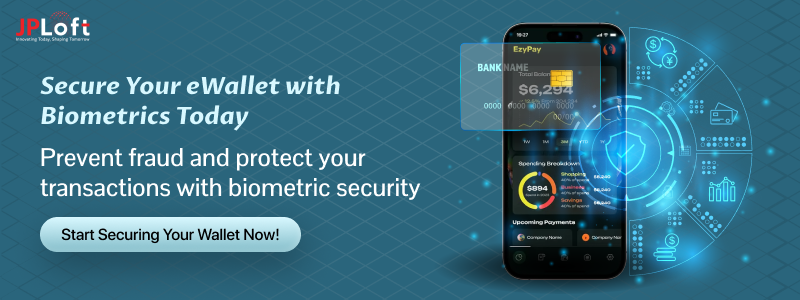
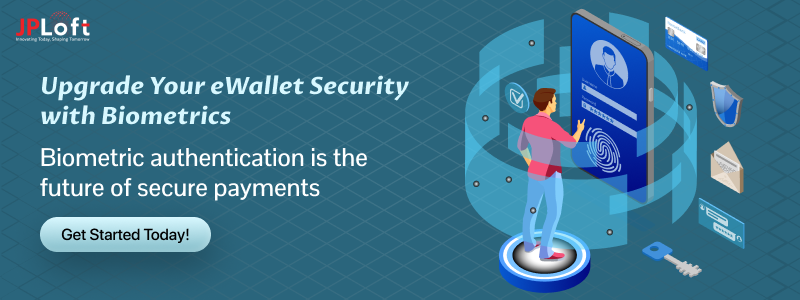

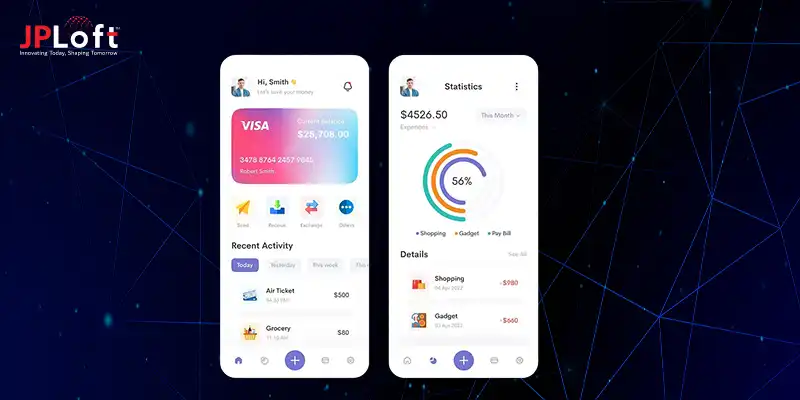
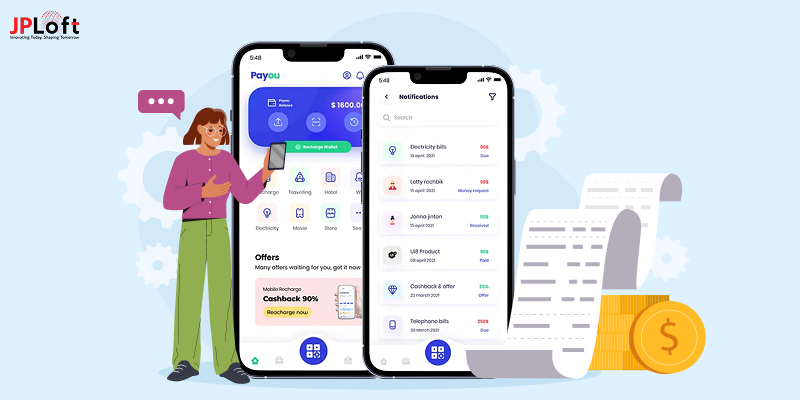
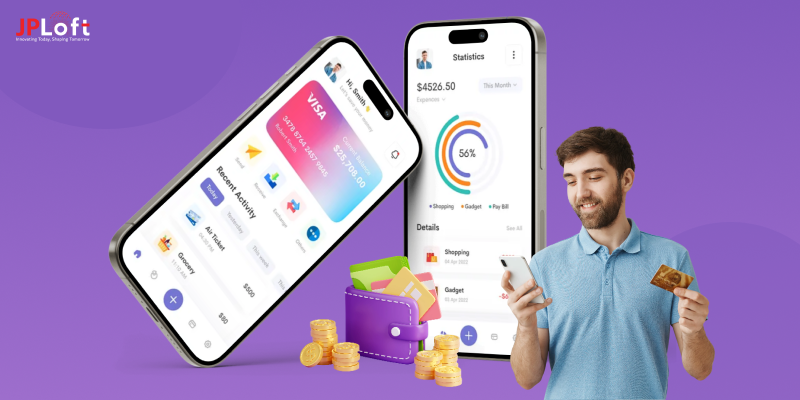


Share this blog